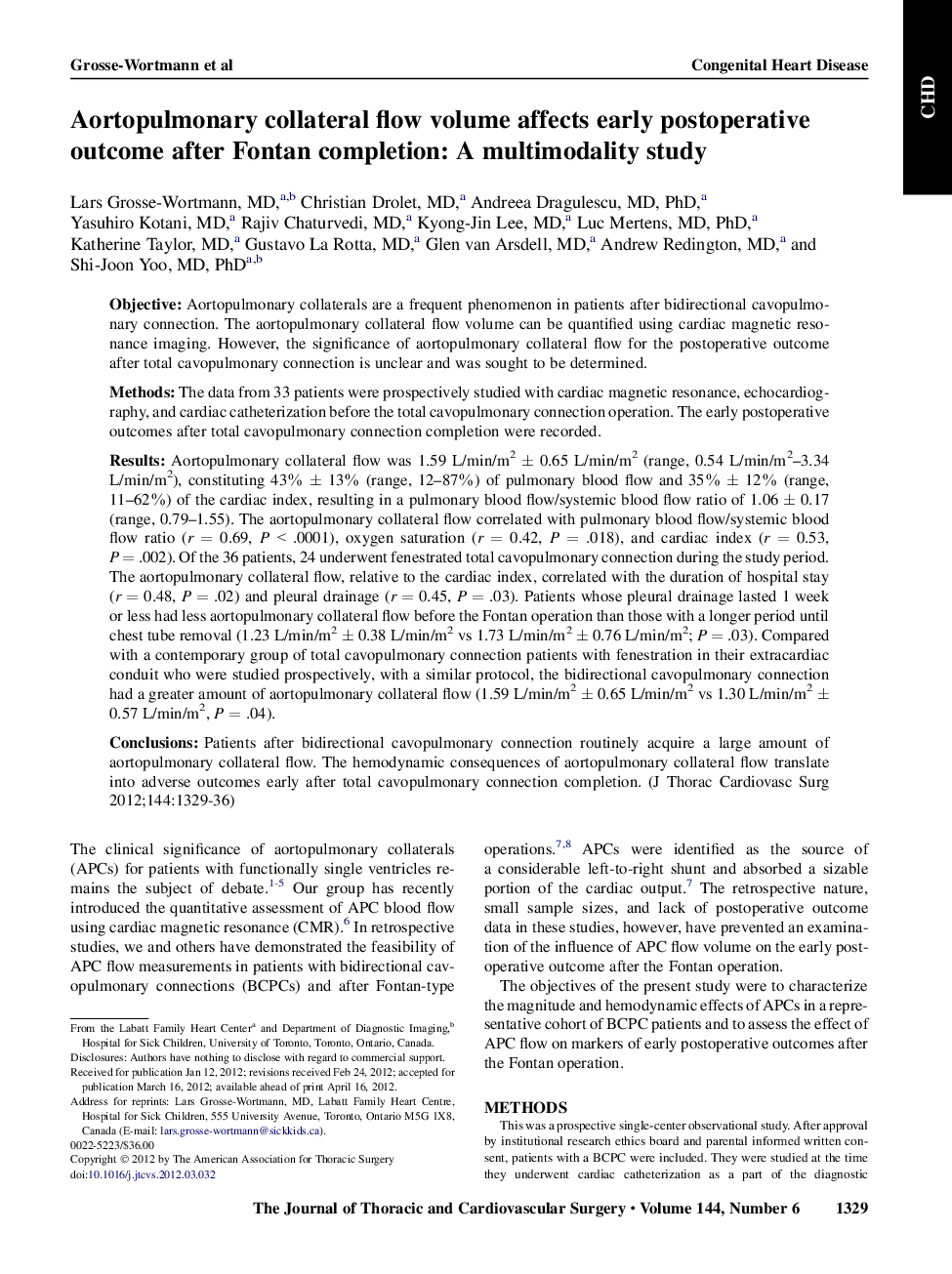| Article ID | Journal | Published Year | Pages | File Type |
|---|---|---|---|---|
| 5990253 | The Journal of Thoracic and Cardiovascular Surgery | 2012 | 8 Pages |
ObjectiveAortopulmonary collaterals are a frequent phenomenon in patients after bidirectional cavopulmonary connection. The aortopulmonary collateral flow volume can be quantified using cardiac magnetic resonance imaging. However, the significance of aortopulmonary collateral flow for the postoperative outcome after total cavopulmonary connection is unclear and was sought to be determined.MethodsThe data from 33 patients were prospectively studied with cardiac magnetic resonance, echocardiography, and cardiac catheterization before the total cavopulmonary connection operation. The early postoperative outcomes after total cavopulmonary connection completion were recorded.ResultsAortopulmonary collateral flow was 1.59 L/min/m2 ± 0.65 L/min/m2 (range, 0.54 L/min/m2-3.34 L/min/m2), constituting 43% ± 13% (range, 12-87%) of pulmonary blood flow and 35% ± 12% (range, 11-62%) of the cardiac index, resulting in a pulmonary blood flow/systemic blood flow ratio of 1.06 ± 0.17 (range, 0.79-1.55). The aortopulmonary collateral flow correlated with pulmonary blood flow/systemic blood flow ratio (r = 0.69, P < .0001), oxygen saturation (r = 0.42, P = .018), and cardiac index (r = 0.53, P = .002). Of the 36 patients, 24 underwent fenestrated total cavopulmonary connection during the study period. The aortopulmonary collateral flow, relative to the cardiac index, correlated with the duration of hospital stay (r = 0.48, P = .02) and pleural drainage (r = 0.45, P = .03). Patients whose pleural drainage lasted 1 week or less had less aortopulmonary collateral flow before the Fontan operation than those with a longer period until chest tube removal (1.23 L/min/m2 ± 0.38 L/min/m2 vs 1.73 L/min/m2 ± 0.76 L/min/m2; P = .03). Compared with a contemporary group of total cavopulmonary connection patients with fenestration in their extracardiac conduit who were studied prospectively, with a similar protocol, the bidirectional cavopulmonary connection had a greater amount of aortopulmonary collateral flow (1.59 L/min/m2 ± 0.65 L/min/m2 vs 1.30 L/min/m2 ± 0.57 L/min/m2, P = .04).ConclusionsPatients after bidirectional cavopulmonary connection routinely acquire a large amount of aortopulmonary collateral flow. The hemodynamic consequences of aortopulmonary collateral flow translate into adverse outcomes early after total cavopulmonary connection completion.
